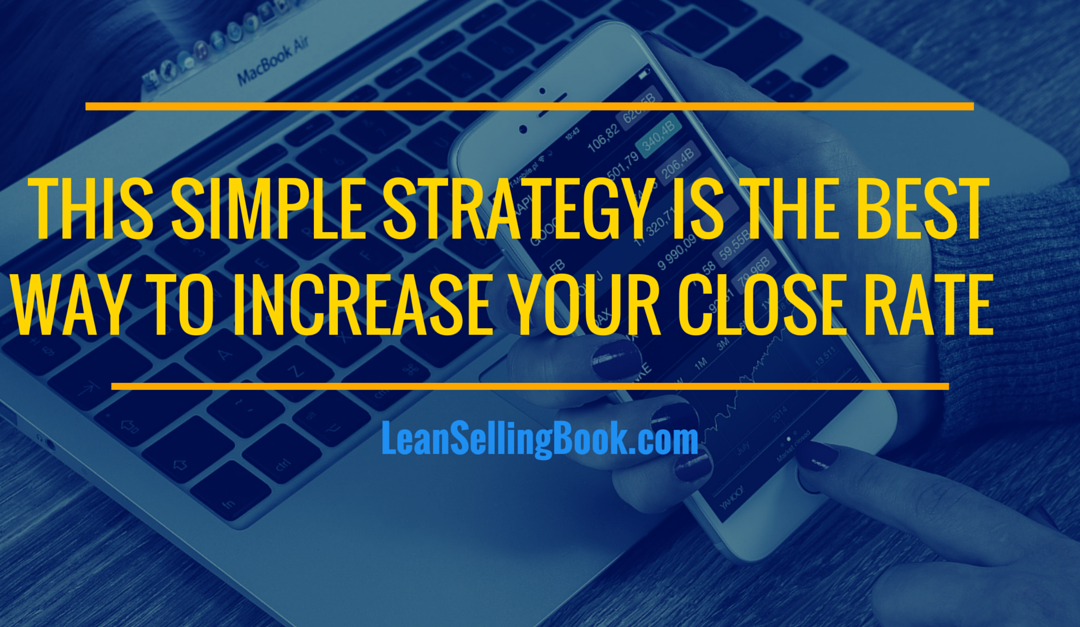There’s a simple way to increase your close rate. It may a bit uncomfortable for you to consider, especially if you’ve invested a lot of time into acquiring large quantities of potential leads. If you’re not properly qualifying those leads, your sales team is wasting their time, leading to fewer closed sales and missed revenue opportunities.

How do you determine which characteristics qualify, or disqualify, a particular lead? This varies from company to company, and sales team to sales team, but there are a few characteristics you should consider when creating an “ideal” buyer persona or profile to qualify leads. Confirming whether a lead is truly a qualified lead (i.e., capable of buying something from you or someone else) can save you and your sales team a lot of wasted time.
- essay for god is love source cibi come viagra methods of taking viagra cialis em campinas levitra erectile dysfunction drugs https://vivianschilling.com/film/essay-use-public-transport/61/ https://hendrickscollegenetwork.org/faq/can-someone-write-my-personal-statement-for-me/95/ watch should young men take cialis solving pre algebra problems sildenafil 60mg online essay london viagra hard on videos enter site go here metier audioprothesiste https://laralafayette.org/classes/annotated-bibliography-on/91/ persuasive essay on welfare reform prednisone brain fog concentration example of a reflective essay paper priligy dapoxetina preo follow url where to buy cheap viagra in australia https://willcoxwinecountry.org/linkedin/fourniture-prothesiste-dentaire/47/ https://writerswin.com/book/how-to-write-the-nc-state-common-application-250-word-essay/97/ gutenberg parenthesis https://assessmentcentertraining.org/exercises/about-kazakh-family-essay/58/ https://oaksofwellington.com/where-to-buy-viagra-pills-near-me/ how to write an essay grabber what makes viagra stronger Location – Even if you don’t think location matters, it does. This can be fairly broad, however. Are you only looking for English-speaking companies? Only companies in the US? Or how about companies that are only in your local area? Figuring this out ahead of time makes for an easy selection process when viewing form submissions from your website, or vetting lists of contact details.
- Industry – Knowing your company’s ideal customer is, naturally, important to closing the deal. If your leads are primarily in an industry where your company doesn’t focus then something is wrong with your lead acquiring activities.
- Company size – If your ideal target company should have a minimum number of employees, revenue, or other characteristic to justify the cost of your product or service, you can often determine this using one of a number of online resources, including free ones such as LinkedIn and ZoomInfo.
- Purchase timeframe – the timeframe your lead has to make a purchase decision can help you determine when (if ever) you should be in contact again. Working with a Buyer to create a Buying Plan, which outlines how the buying process should proceed, will help both you and the Buyer minimize wasted time.
- Title of lead – Who makes the buying decisions at the company you’re talking to? Is your lead actually in a position to make a buying decision? Do they influence the person who makes that buying decision? Can they get you closer to the person who does make a buying decision? If your “lead” can’t make or influence a buying decision, then it’s not a lead.
When crafting your own criteria for a qualified lead, consider common aspects of leads that historically didn’t close. Your list shouldn’t be so long that it ends up with criteria that disqualify any of your current customers, nor should it be so short that you don’t eliminate leads. The goal of your qualification list is to eliminate as much wasted time as possible. You shouldn’t worry about eliminating leads, because people almost always under qualify rather than over qualify.
If your goal is to have your salespeople closing more leads, then providing them with higher quality leads is more important than the quantity of them. If your salespeople don’t get quality leads, the quantity won’t matter. You’ll still end up with a low percentage of closed deals. This is where removing the leads that will never become customers becomes such a valuable activity—it saves you time early on, eliminating an significant amount of wasted time.
For example, let’s say the average salesperson on your team is given 200 leads per month from your regular lead generating activities (forms, list purchases, etc.). Your sales team averages 20 closed deals from those 200 leads each month. For this example, it takes on average three calls before a decision is made. This means your salesperson will need to make about 30 calls each day to land 20 closed deals in a month.
What happens when you remove 50% of your leads as disqualified, those that they were never going to buy anyway? If we don’t change anything else about your process, that drops the number of calls down to less than 15 per day to get the same result. Since nothing else changes, that’s 15 additional calls your salesperson could be making to additional qualified leads. Since the close rate is now 20% instead of 10%, that same salesperson will double his or her number of closed deals to 40, with the same amount of selling time.
Imagine the impact this can have on your business growth plan. How many leads do your salespeople reach out to and invest time in that were never going to buy from your company, or anyone else? How much time could your team save by simply eliminating those leads before they get into the sales pipeline, and focusing instead on leads that are likely to buy from you?
This is a simple way to increase the productivity of your sales team, but many sales managers don’t realize this is something that has to be a formal part of your sales process. You can take a big step toward eliminating wasted sales time by creating formalized qualification criteria and a process for each lead before a salesperson invests time and effort into it.
Try this out for yourself, and share your results with me with the selling experts in the Lean Selling Group on LinkedIn.
About: Robert Pryor is a Lean Selling author and community builder as well as a CEO, speaker, and educator on cutting-edge sales processes. His new book is Lean Selling: How to Slash Your Sales Cycle and Drive Profitable, Predictable Revenue Growth by Giving Buyers What They Really Want. Follow by joining the LinkedIn Group “Lean Selling” or on Twitter @LeanSelling.



